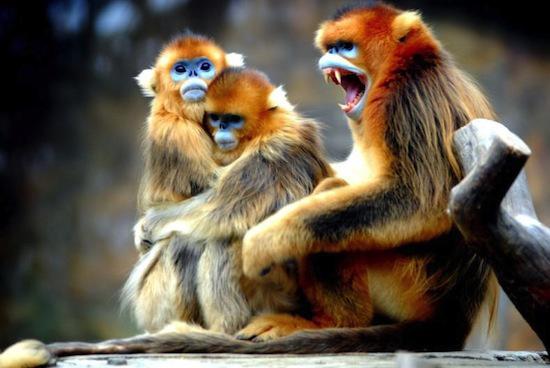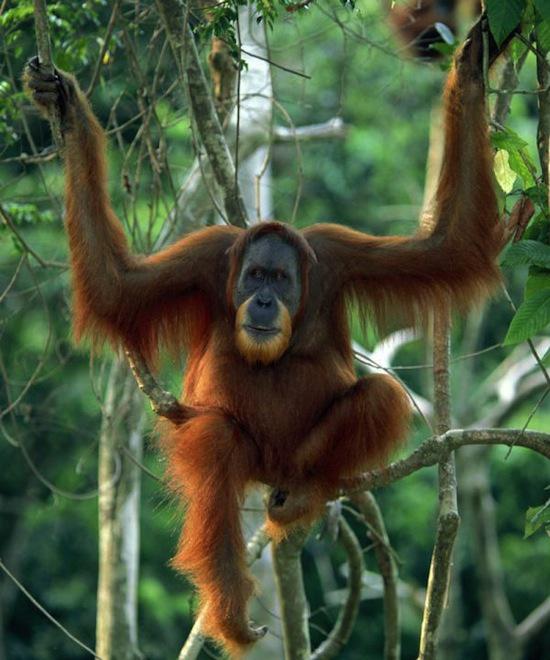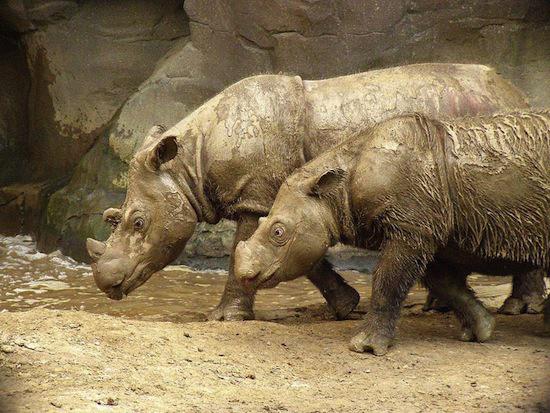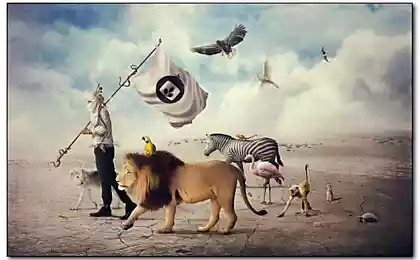965
7 species of animals that we can lose in the near future "thanks" to humanity

"Our world is complicated and vulnerable, like a spider web. Touch one cobwebs and all the others tremble. And we do not just touch on the web - we leave gaping holes in it, "- the words of the great English scientist John. Durrell, who lived in the 20th century. In the 21st century people are openly conducts biological battle with the world.
Nature is unique. Extinct species are unique, and future generations will never see them firsthand. What we leave to their descendants? Scarecrows in museums and bones in the ground? Do not think that only the fauna exterminated using guns and traps. On our planet, there are various changes constantly, from the minor to the global. The Soviet Union also made an effort in this black case: one has only to recall the loud calls: "Turn back the Siberian rivers", who joined the Red Book of several species of extinct animals, and others - have put on the brink of extinction. Deforestation, waste clogging the environment, climate change as a result of human activity - all this destructive and detrimental effect on wildlife. Man inadvertently robs animals and birds of their natural habitat and feeding areas. And if we add to this the unsustainable hunting and poaching of animals, the situation is catastrophic. Some animals are on the verge of extinction. As long as we can still see them in zoos, nature reserves and national parks. Hopefully, the efforts of the conscious, active participants in the struggle to save the planet, we have to preserve the unique and peculiar fauna.
1. Snow Leopard or irbis

Snow Leopard, the inhabitants of the highlands, sometimes referred to as an icon of heathland or mystical beast. Few who can watch the snow leopard in nature, only a trace of life talking about his invisible presence in the mountains. No one knows how many actually snow leopards left in the world. The figures range from 4 to 7000, however, this is a very rough estimate. World Red Book tagging snow leopard to the endangered species. In Russia, there are snow leopards are not more than a hundred individuals. Snow leopard usually occurs at an altitude of 2,000 to 4,000 meters above sea level. Several times he was seen in the Himalayas at a height of more than five and a half kilometers. Harsh winters in the mountains, dangerous cliffs and rocky placers are not afraid of animals - snow leopard here feels like home. His body is well adapted for movement on the mountain slopes and magnificent fur protects against frost. Wonderful animal fur has led to increased attention to him poachers. Increased demand for pelts and their high price has led to constant harassment by the person, which greatly reduced the population of the snow leopard.
2. Ussuri tigr

The representative of the cat - Ussuri tiger is listed as endangered because of its small size. According to various sources in Russia there are from 450 to 500 individuals. A number of Siberian tiger, sometimes called Altai, Siberia, the Amur, Manchurian or North China, lives in China - 40 - 50 individuals. Ussuri tiger - the only subspecies of tigers, to adapt to the difficult conditions of life in the North. The weight of this large cat comes to 200 - 220 kg, and its length (including the tail) reaches 3 - 3, 8 m. Wide and soft pads on the feet do not allow the beast to fall in the snow and in the summer to help move silently through the grass. The main blame for the extinction of the animal, as it often happens, lies on the person: a tiger skin has always valued dearly and animal thoughtlessly destroyed because of the beautiful fur. It brought great harm and cutting taiga, which has deprived the animal's usual habitat. Currently Ussuri tiger is protected. By the way, in Russia for killing a ridiculous penalty imposed, and China tiger murder is punishable by death.
3. Burmese snub-nosed obezyana

Previously, this type of monkey was not a law enforcement status, as was discovered recently - in 2010 year. The name of the monkey was due to the unusual structure of the nose, the nostrils which are turned upward. Sometimes the animal is called a monkey sneezes: during the rain water enters the nostrils, and the monkey is constantly sneezes. In 2012, the Myanmar snub-nosed monkey joined the list of endangered mammals of the Red Book. An updated version of the publication immediately canonized her in the category of species with the highest risk of extinction, because the number of monkeys is only about 300 individuals. This population is not numerous risks disappear - people actively destroying their habitat. The mite introduced and hunters - the meat is quite tasty monkeys, even monkeys can be sold to the needs of Chinese medicine. Encouraging the following fact: in those rare moments when the scientists managed to see the snub-nosed monkeys, with the latter were their numerous offspring. Thus, the population is likely to play.
4. Orangutan

Another representative of the apes - orangutans in the wild, is also under threat of extinction. Incredible strength, brightest eyes and outstanding ability - in ancient times the people inhabiting the Southeast Asia, even considered them a kind of tribe - "forest people". Huge primates (weight of adult males often reaches 150 kg) inhabit the tall trees in the rainforests of Sumatra and Borneo. They are excellent climb trees. Strong legs and arms to grasp tenacious vines, helping to easily move through the woods. The main reason for the extinction of the great apes - continue to habitat loss and poaching. Creating national parks to some extent helps to maintain endangered species.
5. Caspian tyulen

In the early twentieth century the population of Caspian seals was plentiful and consisted of one million individuals. A little more than a hundred years, and the number of marine mammal reduced by 10 times - up to 100 thousand. Scientists predict a further decline in the population due to several factors: environmental pollution, climate change, habitat destruction and disease. The most acute problem - the mortality of young animals as a result of hunting. As the hunt for the grown animal difficult task, poachers prefer to produce a defenseless Belka (baby seals). According to some reports, the shooting of up to 6 - 7 thousand individuals per year. This figure is comparable with the permitted volume shooting. Thus, the decline of the population is guaranteed even at low levels of hunting. Scientists believe - seal must prohibit fishing for several years.
6. Sumatran nosorog

In Indochina and the Malay Peninsula, Sumatra and Kalimantan islands, as well as on the territory of Assam and Burma lives the smallest of the entire family of rhinoceroses - Sumatran. Its length does not exceed 280 cm and the height at the withers is 100 - 150 cm. Sumatran rhinos excellently developed physically. They are excellent swimmers and speed runs are not inferior to other members of the families of rhinos. Orient rhinos smell as vision have rather weak.
The number of individuals around the world has from 170 to 270 pieces. It is known that in captivity at the zoo of Copenhagen lives only one female of this species of rhinos, who caught in 1959. Since then, more than once attempted to find her a partner, but they have not brought success. Animal mercilessly shoot poachers - in fact just one kilogram of horn give him tens of thousands of dollars. Hunters do not stop even remote places in which they live rhinos. Currently, hunting is prohibited in the Sumatran rhino.
7. Zubr

Last representative of the European wild bulls - bison is the largest land mammal and severe in Europe. Its weight is 1,000 kg, the length of an adult animal reaches 330 cm and the height at the withers is equal to two meters. Reasons for reducing the population of bison are the same: intense hunting, the growing density of human settlements, deforestation. The International Red Book bison falls under the category of vulnerable species, and the Russian Red Book assigns him a place in the first category of species endangered.
The fauna of the planet Earth - it's not a random accumulation of all kinds of animals, and slim-functioning system. Any loss, at first glance, even the most insignificant level, necessarily lead to irreversible major changes. The trouble is that it is unlikely that nature would reiterate what was once created. It is important to maintain and preserve every kind of animal, because any one of them is unique, unique and necessary human and nature.
via factroom.ru
Phosphorus can make your jaw glow. Not all bones, namely the jaw
By 2100, the ninth year the number of people who died from the heat, almost double























